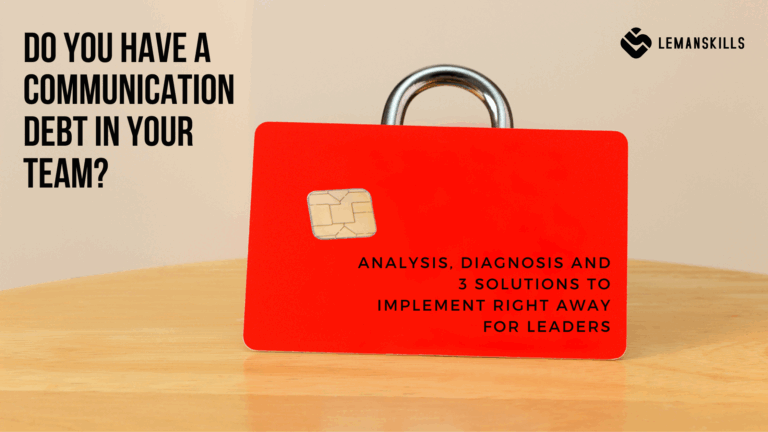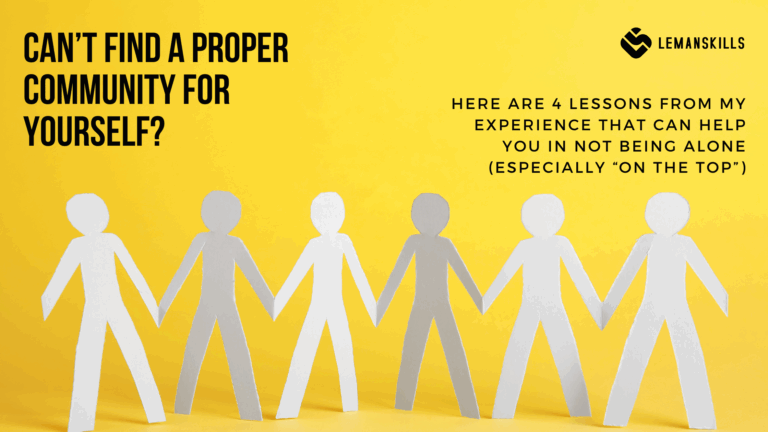When I was describing all 6 Process Communication Model (PCM) types, it dawned on me that if I want to find one aspect of it that interests me, I need to go into each article and look for one part. And there are some of those, that are more important to dig deeper into, a good example is the aspect of communication channel.
So I’ve decided that I’ll go into this directing to simplify and edit this experience for you: to go into some aspects of PCM, with practical examples. Hope that’ll be useful and will give you all the impulse to start using it in real life.
What Are Communication Channels?
Before we go into the details, let’s start with answering this questions: what a channel actually is?
Communication channel is the way we build a sentence we want to push forward the other person (doesn’t matter if it’s a written or verbal communication). Surprisingly it really does matter if we put a question mark or a period at the end of the sentence. It matters so much that most of the time it has a huge influence on if the communication will go through or not (will be efficient or will lead to a misunderstanding).
What do I mean by that? Take a look on those examples (purposefully not business-related):
- What do you think about this painting?
- Please tell me what you think about this painting.
- Oh man, what a painting, I’m sure it kills us both just from looking at it!!!!!
- Thank you for being here with me to marvel this painting, I’m more than happy to hear your impressions on it.
Do you see the difference? We all have one dominant preference of getting and using the channel, depends on our personality base. When you look on those sentences: which one is the most comfortable for you? Depending on which one you choose, it’s a strong indicator of your base.
Requestive Channel
The first sentence is a great example of a requestive channel. As you can see, the idea is simple: ask a question (so a sentence with a question mark at the end of it).
Using the knowledge that you already have, you can see the difference between the questions that we can ask towards 2 bases that will prefer this channel: Thinker and Persister. Channel is only one part of the puzzle: if we want communication to go through with success we need to combine a preferred channel with a favorite perception. That’s why we’ll ask different question within a conversation with a Thinker and Persister. We’ll ask:
Thinker: “What do you think…?”
Persister “What is your opinion on…? / What do you believe…?”
It is important to ask the right questions. And as much important is to know which channels are not so good to use in communication with certain types. Thinker and Persister will react really badly on others, but the worst thing you can do is to use directive channel. It will trigger them to go straight into distress, reactive aggressively form their attacker mask.
Directive Channel
Directive channel is about creating the sentence with the dot at the end of it.
I would love for all of us to demystify being direct and separate it from being aggressive, rude or too pushy.
Being directive is just saying what there’s to be done: I’m not asking you or hesitate. I just say it in a straightforward way, taking care of OK-OK perspective.
Two PCM types prefer to get it: Promoter and Imaginer. And again, it will differ on how we build a communication to each of them. That’s because their need of getting directive channel is different: Promoter doesn’t want to waste time, so they just want to get a task and move to action. Imaginer wants to be invited to share what’s in their heads, so they need direct communication to do that. So, the way we is this channel matters. We’ll say:
Promoter: “Please create this report for tomorrow, not later than 5PM.”
Imaginer: “I need this report to be done by tomorrow, not later than 5PM. Please tell me what you see in your head when I ask you to do it.”
Both are tasks we want to delegate for a person but said differently.
They are not very good at receiving requestive channel, also Imaginer will react with a drooper mask on Emotive one (too much emotion for them).
Emotive Channel
Emotive channel is about the positive energy and contact. As we can easily guess, the Rebel is our person here: it’s their favorite channel. In this one they can exchange energy, creative ideas, brainstorm and get into positive contact with others. It works even if it’s just for a little bit at the beginning of the conversation.
How can it look like?
“OH MAAAAN, this weekend was so dope, I need to tell you about it!”
“C’mon, let’s do it and then we’ll go into the agenda: it won’t kill us to talk a little bit!”
It is about 2-3 exchanges and then you can go to the point of the meeting or a conversation. Sometimes it’s just about the exchange and that’s enough: especially when you are a Rebel in a base yourself, you’ll enjoy the conversation itself if it’s led that way.
Nurturative Channel
Last but not least: Harmonizer and their preferred nurturative channel.
Nurturative channel is all about seeing a person, feeding their recognition of person need. Harmonizers needs to be seen, as an important part of a team, community or other relationship.
Sometimes it’s enough to say:
“Thank you for being here. I know that recently it’s been crazy busy and hard, so I really appreciate you finding time to talk.”
The key thing here is to give a positive, nurturing recognition of a person, making them visible and important. In the world of endless task lists, constant rush and not enough time for anything, we could all use more moments like this for a proper recognition and a gratitude that will give us more conscience that we can’t take everything and everyone we have in our work or life for granted.
The Bottom Line
This is simple, but not always easy: use the channel that your recipient prefers, not what is your preferred way to receive communication from others. It’s not a problem when on the other side of communication process is the person who prefers the same channel as we do: then we don’t need to stretch at all. The situation gets more complicated when we need to reach to our condo on the higher levels of skills: we can do it, since we all have all resources in us.
Being mindful about our own preferences and how much does it cost to reach to each of the others is the first step to train the muscle of using the right channel. I believe it’s worth it, when we think about all those hours that we waste on clarifying communication and resolving misunderstandings.
What do you say: is it worth it for you too?
PS. Here’s a great podcast around communication itself (not PCM-related, but also really insightful):




